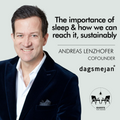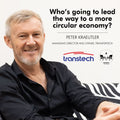THE IMPORTANCE OF CREATIVITY
The global population has been thrust into an unprecedented atmosphere of fear, uncertainty, and for some - dormancy.
But, is there merit in turning to artistic hobbies during this time?
Creativity, as a personality trait, or career pursuit, has - sadly - been brushed aside in a world filled with statistics, codes, logic, and numbers.
At an academic level, subjects that fall under the categorization of “The Arts” or - God forbid - “The Liberal Arts” have often been overlooked as “less credible” than their business-orientated and scientific-reasoned counterparts. But, studies have shown that there is more to creativity than just plopping some paint on a paintbrush and putting it to the canvas.
In the current global climate of emotions, doing just that might be exactly what one needs.
Photo by Amauri Mejía on Unsplash
OUR COLLECTION PRIORITIZES CRAFTMANSHIP
Karim Guest New York and the collection of designers at THE GUESTLIST epitomize slow fashion that is gentler to the environment, supports social responsibility, and champions the United Nations’ Sustainable Development Goal of sustainable consumption and production by 2030. Our collection prioritizes craftmanship, quality over quantity, and is created on a made-to-order basis.
LIVING A LONGER LIFE
A study in the Journal of Aging and Health found that being creative can reduce one’s mortality and mental degeneration. The act of creating and producing something new - in any form - engages your brain in new ways, and therefore maintains your neural networks. This trains your brain to function at a higher level - much like training a muscle to be stronger. The higher the functionality of your brain, the more that these neural pathways are maintained. This means that the ageing process within your neurons is counteracted, and as you age, the sharper you will be. Imagine, an easy, enjoyable anti-aging method? Where do we sign up?
LIVING A LONGER LIFE
A study in the Journal of Aging and Health found that being creative can reduce one’s mortality and mental degeneration. The act of creating and producing something new - in any form - engages your brain in new ways, and therefore maintains your neural networks. This trains your brain to function at a higher level - much like training a muscle to be stronger. The higher the functionality of your brain, the more that these neural pathways are maintained. This means that the ageing process within your neurons is counteracted, and as you age, the sharper you will be. Imagine, an easy, enjoyable anti-aging method? Where do we sign up?
HANDLE EMOTIONS BETTER
Being creative, whether with intent, or somewhat mindlessly, is a practical and rewarding means of processing various emotions. Creativity - as an act - is understood to be an unconscious process, yet it is intricately linked to one's emotions. Music, art, writing - all forms of art provide spaces within which one’s emotions can be expressed - and thereby processed.
HANDLE EMOTIONS BETTER
Being creative, whether with intent, or somewhat mindlessly, is a practical and rewarding means of processing various emotions. Creativity - as an act - is understood to be an unconscious process, yet it is intricately linked to one's emotions. Music, art, writing - all forms of art provide spaces within which one’s emotions can be expressed - and thereby processed.
A study published by the American Journal of PublicHealth in 2010 observed the positive effects that the process of creating and observing art has, especially on emotional trauma. Musical therapy as a means to soothe trauma, visual arts as a means of generating meaning and communication, physical movement for anxiety relief - these are all noted to have been hugely beneficial in their respective cases. . Putting one’s “feelings on paper” so-to-speak, even when just for oneself, is a great tool to utilize this act of transference. Indeed, the basis of psychotherapy’s talking therapy relies on this methodology - having one “talk things out,” expressing something in speech form often has the result of relief.
Photo by Laura Fuhrman on Unsplash
A study published by the AmericanJournal of Public Health in 2010 observed the positive effects that the process of creating and observing art has, especially on emotional trauma. Musical therapy as a means to soothe trauma, visual arts as a means of generating meaning and communication, physical movement for anxiety relief - these are all noted to have been hugely beneficial in their respective cases. . Putting one’s “feelings on paper” so-to-speak, even when just for oneself, is a great tool to utilize this act of transference. Indeed, the basis of psychotherapy’s talking therapy relies on this methodology - having one “talk things out,” expressing something in speech form often has the result of relief.
A study published by the American Journal of Public Health in 2010 observed the positive effects that the process of creating and observing art has, especially on emotional trauma. Musical therapy as a means to soothe trauma, visual arts as a means of generating meaning and communication, physical movement for anxiety relief - these are all noted to have been hugely beneficial in their respective cases. . Putting one’s “feelings on paper” so-to-speak, even when just for oneself, is a great tool to utilize this act of transference. Indeed, the basis of psychotherapy’s talking therapy relies on this methodology - having one “talk things out,” expressing something in speech form often has the result of relief.
A study published by the American Journal of Public Health in 2010 observed the positive effects that the process of creating and observing art has, especially on emotional trauma. Musical therapy as a means to soothe trauma, visual arts as a means of generating meaning and communication, physical movement for anxiety relief - these are all noted to have been hugely beneficial in their respective cases. Putting one’s “feelings on paper” so-to-speak, even when just for oneself, is a great tool to utilize this act of transference. Indeed, the basis of psychotherapy’s talking therapy relies on this methodology - having one “talk things out,” expressing something in speech form often has the result of relief.
A study published by the American Journal ofPublic Health in 2010 observed the positive effects that the process of creating and observing art has, especially on emotional trauma. Musical therapy as a means to soothe trauma, visual arts as a means of generating meaning and communication, physical movement for anxiety relief - these are all noted to have been hugely beneficial in their respective cases. . Putting one’s “feelings on paper” so-to-speak, even when just for oneself, is a great tool to utilize this act of transference. Indeed, the basis of psychotherapy’s talking therapy relies on this methodology - having one “talk things out,” expressing something in speech form often has the result of relief.
A study published by the AmericanJournal of Public Health in 2010 observed the positive effects that the process of creating and observing art has, especially on emotional trauma. Musical therapy as a means to soothe trauma, visual arts as a means of generating meaning and communication, physical movement for anxiety relief - these are all noted to have been hugely beneficial in their respective cases. . Putting one’s “feelings on paper” so-to-speak, even when just for oneself, is a great tool to utilize this act of transference. Indeed, the basis of psychotherapy’s talking therapy relies on this methodology - having one “talk things out,” expressing something in speech form often has the result of relief.
Photo by Laura Fuhrman on Unsplash
A study published by the American Journal ofPublic Health in 2010 observed the positive effects that the process of creating and observing art has, especially on emotional trauma.
A study published by the American Journal ofPublic Health in 2010 observed the positive effects that the process of creating and observing art has, especially on emotional trauma. Musical therapy as a means to soothe trauma, visual arts as a means of generating meaning and communication, physical movement for anxiety relief - these are all noted to have been hugely beneficial in their respective cases. . Putting one’s “feelings on paper” so-to-speak, even when just for oneself, is a great tool to utilize this act of transference. Indeed, the basis of psychotherapy’s talking therapy relies on this methodology - having one “talk things out,” expressing something in speech form often has the result of relief.
A study published by the AmericanJournal of Public Health in 2010 observed the positive effects that the process of creating and observing art has, especially on emotional trauma. Musical therapy as a means to soothe trauma, visual arts as a means of generating meaning and communication, physical movement for anxiety relief - these are all noted to have been hugely beneficial in their respective cases. . Putting one’s “feelings on paper” so-to-speak, even when just for oneself, is a great tool to utilize this act of transference. Indeed, the basis of psychotherapy’s talking therapy relies on this methodology - having one “talk things out,” expressing something in speech form often has the result of relief.
Photo by Laura Fuhrman on Unsplash
Musical therapy as a means to soothe trauma, visual arts as a means of generating meaning and communication, physical movement for anxiety relief - these are all noted to have been hugely beneficial in their respective cases. Putting one’s “feelings on paper” so-to-speak, even when just for oneself, is a great tool to utilize this act of transference. Indeed, the basis of psychotherapy’s talking therapy relies on this methodology - having one “talk things out,” expressing something in speech form often has the result of relief.
BETTER PROBLEM-SOLVING
Engaging in creative activities engages the neurological process on the right hemisphere of one’s brain. If you find that you are bound to largely left-brain, logical, analytical activities, due to work or other aspects, your right-brain processes become largely inactive when it comes to daily engagement. But, when both hemispheres of your brain are engaged and regularly exercised, your overall problem-solving abilities grow stronger. By training your brain to think more creatively, through simply listening to music, or being creative in other ways, you cultivate the ability to to resolve daily tasks more efficiently and creatively. The potent combination of logic and innovation reaps far-reaching rewards when used to face any concern.
Photo by Rachael Gorjestani on Unsplash
CONFIDENCE GROWTH
As we strive to constantly improve our skills and abilities, the neural pathways in our brain develop and grow. But learning something new - such as a new art form - can contribute to an increase in your self-confidence too. Frustration may surface initially, but as you continue with your endeavor, and you realize that you are capable of learning something brand new, and begin to see your improvements within that skill, you become more confident in and of yourself. Feelings of satisfaction and pride begin to sprout, and these grow as your abilities do.
The act of learning has been linked to a release of dopamine in the brain, a “happy hormone,” which inspires feelings of joy and satisfaction. Increasing the process of learning, even if this is in the realm of being creative, helps your brain to assist your body with feeling good.
CONFIDENCE GROWTH
As we strive to constantly improve our skills and abilities, the neural pathways in our brain develop and grow. But learning something new - such as a new art form - can contribute to an increase in yourself-confidence too. Frustration may surface initially, but as you continue with your endeavor, and you realize that you are capable of learning something brand new, and begin to see your improvements within that skill, you become more confident in and of yourself. Feelings of satisfaction and pride begin to sprout, and these grow as your abilities do.
The act of learning has been linked to a release ofdopamine in the brain, a “happy hormone,” which inspires feelings of joy and satisfaction. Increasing the process of learning, even if this is in the realm of being creative, helps your brain to assist your body with feeling good.
Photo by Porapak Apichodilok from Pexels
WELCOME DISTRACTION
If nothing else, spending your free time enjoying a creative hobby is often a welcome distraction from the day-to-day routine, whether that’s in isolation or not. Whatever that hobby might be, it is important to have an activity that you enjoy doing, and that is removed from your daily commitments and routine. Whether it be learning to play an instrument, baking, or reading - be sure to give your mind a rest from work and the stress of the real world.
Take sanctuary in doing something that you love. And who knows, it may just open new avenues when the world opens up again.







